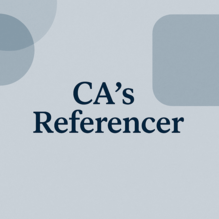Audit transparency unlocked:
The value of critical audit matters (CAMs) to investors
June 2, 2025
Critical audit matters (CAMs) are a relatively new requirement introduced by the Public Company Accounting Oversight Board (PCAOB) to enhance the transparency and usefulness of audit reports.
Traditionally, these reports were a brief, binary statement: pass or fail. Now, by highlighting the most complex and judgment-heavy parts of an audit, CAMs add valuable context for users of financial statements — particularly investors and regulators — about where the financial reporting risks lie, as well as to better understand the amount of auditor work and judgment contained in the audit of financial statements. CAMs may also enhance investor confidence in financial reporting, improve the quality of management disclosures, and increase the competition for audit quality among the firms.
While CAMs provide access to a deeper level of insight, they are not free from criticism. In this blog, we’ll explore the concept of CAMs, how they fit into the audit process, the benefits they offer to investors, and the challenges auditors face in reporting them. We’ll also look at how CAM disclosures can be enhanced to better serve stakeholders.
What are critical audit matters (CAMs)?
First, the basics. A critical audit matter (CAM) is defined as any matter that is:
Communicated or required to be communicated to the audit committee,
Relates to accounts or disclosures that are material to the financial statements, and
Involves especially challenging, subjective, or complex auditor judgment.
CAMs are not errors, nor do they indicate that something is wrong. Rather, they highlight the auditor’s most difficult areas of judgment — whether due to estimation uncertainty, management assumptions, or complex accounting standards. CAMs may also provide value to investors by providing information that may be useful in their connection with their oversight of audit committees and for determining how to vote on the election of audit committee chairs and members and the ratification of the external auditor.
Common examples of CAMs include:
Revenue recognition for complex contracts
Valuation of goodwill or intangible assets
Accounting for income taxes or uncertain tax positions
Fair value measurement of financial instruments
Complex legal contingencies or litigation reserves
What is the value of CAMs to investors?
CAMs provide value to investors by offering insight into the most complex and judgmental areas of the audit. This visibility enables more informed decision-making as it relates to a company’s financial health and risk profile.
For the first time, investors can see which parts of the financial statements required the most auditor scrutiny. This insight adds depth to the financial reporting picture and may help investors identify areas where significant management judgment or estimation was applied.
CAMs often point to areas that carry the most uncertainty, including revenue recognition, tax liabilities, or asset impairments. Knowing where the auditor focused their attention can help investors better evaluate the sustainability and quality of a company’s earnings.
The inclusion of CAMs also strengthens the dialogue between auditors, audit committees, management, and investors. CAMs support investors in conducting further due diligence, looking at management disclosures more critically, questioning assumptions, and/or comparing benchmarks across peer companies.
From an accountability perspective, CAMs incentivize management to provide clearer, more defensible explanations and documentation and disclosures for complex areas of the financial statements. Knowing that these issues will be publicly reported leads both management and auditors to engage more thoughtfully on high-risk issues.
Challenges and criticisms of critical audit matters
While CAMs have the ability to provide transparency and insight into the audit process, there has been some disagreement regarding their effectiveness. Challenges and criticisms such as vague disclosures, auditor liability concerns, and inconsistent application have sparked debate about their true value.
Moreover, to date, auditors’ implementation of CAMs has failed to provide the information that many investors most wanted and that the standard explicitly permits: (1) an indication of the outcome of the audit procedures performed on the matter; and (2) key observations with respect to the matter.
When CAMs are overly standardized or vague, they fail to provide the company-specific insights that investors need to assess audit and business risks. This “generic boilerplate language” undermines the intent of CAMs, turning them into compliance exercises rather than meaningful disclosures.
Moreover, repetition of previously disclosed information that offers no new insight provides little value to investors. Further, if there is a lack of detail on an auditor’s response to the matter, investors gain little understanding of how the risk was mitigated. Without clear links to financial statement risks, investors are limited in their ability to assess the potential impact on earnings, valuation, or risk profile.
As the practice of CAMs evolves, either the disclosures will become more meaningful as intended by the standard, or there will be more calls for amendments to the CAMS standard that result in more meaningful disclosures to solidify their effectiveness.
How CAM reporting can be enhanced
To maximize the value of critical audit matters for investors, audit firms should prioritize crafting CAMs that are company specific. Avoid boilerplate language and provide specific details about the outcome of the procedures performed and key observations with respect to the matter.
Unless CAMs evolve, amendments to the CAM standards by the PCAOB will be necessary to help promote high-quality disclosures across the profession.
A turning point in auditing
CAMs represent a turning point in audit reporting — moving beyond a binary opinion to a more nuanced view of auditor judgment and company-specific risks. For investors, CAMs can offer valuable insights into where auditors encountered complexity and how they addressed it.
While challenges remain in ensuring consistency, clarity, and usability, the potential of critical audit matters to improve transparency and accountability in financial reporting is undeniable. As audit professionals, regulators, and investors continue to engage with CAM disclosures, there is an opportunity to refine and elevate this communication tool into a powerful asset for investor decision-making.
[Thomson Reuters]


